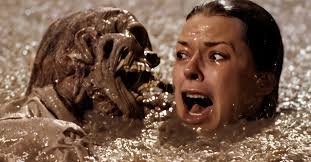The 1982 movie poltergeist used real skeletons as – tymoff
Introduction
In the world of supernatural cinema, few films have left as enduring a mark as the 1982 movie poltergeist used real skeletons as – tymoff. Directed by Tobe Hooper and produced by Steven Spielberg, Poltergeist quickly became a classic, revered for its chilling atmosphere and groundbreaking special effects. However, beyond its ghostly apparitions and eerie narrative, there’s a lesser-known fact that continues to intrigue and unsettle fans: the 1982 movie Poltergeist used real skeletons as part of its production.
This controversial detail has sparked curiosity and speculation over the years. How did the use of real skeletons impact the film? What were the reasons behind this choice, and what does it reveal about the practices in filmmaking during that era? In this comprehensive exploration, we’ll delve into the story behind the real skeletons used in Poltergeist, the implications of their use, and the enduring legacy of this unsettling revelation.
The Controversial Choice: Real Skeletons in Poltergeist
When the 1982 movie poltergeist used real skeletons as – tymoff, it was praised for its innovative special effects and terrifying scenes. One of the most memorable sequences is the scene involving a submerged swimming pool filled with corpses. To achieve the desired effect, the production team made a striking decision: they used real skeletons as props.
Why Real Skeletons?
In the early 1980s, the film industry often utilized real human remains for special effects due to the availability and cost considerations. Creating realistic-looking skeletons with plastic and other materials was both expensive and technologically challenging at the time. The use of real skeletons allowed filmmakers to achieve a high level of authenticity that might have been difficult to replicate with artificial materials.
Moreover, the real skeletons provided a level of detail and realism that contributed significantly to the film’s eerie atmosphere. The decision was driven by the desire to create a more visceral and believable experience for the audience. However, the choice to use real skeletons also raised ethical questions and concerns that have lingered since the film’s release.
Behind the Scenes: The Making of the Skeleton Scene

The scene in question, which involves the protagonist’s family discovering a pool filled with skeletons, was one of the most complex and visually striking in the film. To achieve this, the production team had to source real skeletons, a process that involved obtaining them from medical supply companies or universities where they were used for educational purposes.
The skeletons were used in several scenes, including the iconic pool sequence where they are dramatically unearthed. The authenticity of the real skeletons added a layer of unsettling realism that contributed to the film’s lasting impact. The production team’s decision to use real skeletons was not merely a matter of convenience but a deliberate choice to enhance the film’s horror elements.
The Historical Context of Skeleton Use in Film
To fully understand the impact of using real skeletons in Poltergeist, it’s essential to explore the historical context of how and why real human remains were used in filmmaking.
Early Cinematic Techniques
In the early days of cinema, special effects were often rudimentary compared to modern standards. Filmmakers had to rely on practical effects to achieve the desired impact. Real skeletons, along with other human remains, were used because they provided an undeniable authenticity that was difficult to replicate with props made from other materials.
For example, the 1982 movie poltergeist used real skeletons as – tymoff, the film industry faced similar challenges when creating realistic horror effects. Films like Dracula and Frankenstein used a mix of practical effects and real materials to create believable depictions of the supernatural. As technology advanced, filmmakers began to experiment with various materials, but real skeletons remained a choice for achieving certain effects until the industry moved towards more advanced techniques.
Ethical Shifts in the Industry
As the film industry evolved, so did its ethical standards. By the late 20th century, there was a growing awareness of the ethical implications of using real human remains in film. The controversy surrounding Poltergeist played a significant role in prompting discussions about the need for more stringent regulations and ethical guidelines in filmmaking.
The ethical shift was driven by a combination of factors, including increased sensitivity towards the treatment of human remains and advancements in special effects technology. The move towards using artificial props and digital effects was partly a response to the backlash against practices like those seen in Poltergeist.
The Impact of the Real Skeletons on the Film’s Legacy
The decision to use real skeletons in Poltergeist has had a lasting impact on the film’s legacy, influencing how the film is perceived and remembered in the horror genre.
Audience Reactions
When Poltergeist was first released, the revelation that real skeletons were used in some scenes shocked many viewers. While the film was praised for its innovative effects and terrifying scenes, the knowledge that real human remains were involved added a layer of unease that persisted long after the film’s initial release.
Audience reactions varied widely. Some viewers were fascinated by the film’s authenticity and the lengths to which the filmmakers went to create a convincing horror experience. Others were disturbed by the ethical implications and questioned the decision to use real skeletons for entertainment purposes.
Influence on Horror Cinema
The controversy surrounding Poltergeist had a profound influence on the horror genre. The film became a cautionary tale about the use of real human remains in cinema, leading to increased scrutiny and changes in industry practices.
Subsequent horror films adopted more ethical approaches, relying on advanced special effects technology and artificial props to achieve realistic effects without the use of real skeletons. This shift reflected a broader trend in the film industry towards more responsible and respectful practices in handling human remains.
The Ethical Debate: Real Skeletons vs. Artificial Props

The ethical debate surrounding the use of real skeletons in Poltergeist raises important questions about the boundaries of artistic expression and respect for human dignity.
Arguments for Using Real Skeletons
Proponents of using real skeletons in film often argue that the choice was driven by a desire for authenticity and realism. In the context of Poltergeist, the real skeletons contributed to the film’s eerie and unsettling atmosphere, enhancing the overall horror experience.
From a practical standpoint, real skeletons provided a level of detail that was difficult to replicate with artificial materials at the time. The filmmakers’ decision to use real skeletons was influenced by the technological limitations and cost considerations of the era.
Arguments Against Using Real Skeletons
Critics of using real skeletons argue that it is unethical and disrespectful to use human remains for entertainment purposes. The idea of using real skeletons for a horror film raises concerns about the dignity and respect owed to individuals, even after their death.
The backlash against Poltergeist highlighted the need for more ethical practices in filmmaking. The controversy served as a catalyst for change, prompting the industry to adopt stricter guidelines and regulations regarding the use of human remains.
The Evolution of Special Effects in Film
The controversy surrounding Poltergeist and its use of real skeletons is part of a broader narrative about the evolution of special effects in cinema.
Advances in Technology
Since the release of Poltergeist, the film industry has made significant advancements in special effects technology. The development of sophisticated digital effects and 3D modeling has allowed filmmakers to create realistic and convincing effects without the need for real human remains.
Modern special effects techniques, such as CGI and motion capture, have revolutionized the way horror films are produced. These technologies offer greater control and flexibility, allowing filmmakers to achieve their desired effects while avoiding ethical concerns associated with the use of real skeletons.
The Role of Practical Effects
Despite the advances in digital effects, practical effects continue to play a crucial role in filmmaking. The tactile nature of practical effects adds a layer of authenticity that can enhance the overall cinematic experience. However, contemporary filmmakers are more mindful of ethical considerations and strive to use materials that respect the dignity of individuals.
Conclusion
The 1982 movie poltergeist used real skeletons as – tymoff used real skeletons as part of its production, a fact that continues to intrigue and unsettle audiences. While the decision to use real human remains was driven by the desire for authenticity and realism, it also raised significant ethical concerns that have influenced industry practices in the years since.
The story of the real skeletons in Poltergeist is a fascinating chapter in the history of filmmaking. It highlights the lengths to which filmmakers have gone to create memorable and impactful experiences for audiences. As we look back on this iconic film, we are reminded of the importance of balancing artistic vision with ethical considerations, ensuring that the legacy of Poltergeist remains both compelling and respectful.
In exploring the controversial choice to use real skeletons, we gain insight into the evolving practices of the film industry and the ongoing dialogue about the ethical dimensions of filmmaking. The 1982 movie Poltergeist used real skeletons as part of its production, a choice that remains a significant and thought-provoking aspect of its legacy.
By understanding the context and impact of this decision, we can appreciate the film’s place in cinematic history while also recognizing the importance of ethical practices in the creation of art. The legacy of Poltergeist serves as a reminder of the need for responsible filmmaking, balancing the pursuit of artistic excellence with respect for human dignity.






